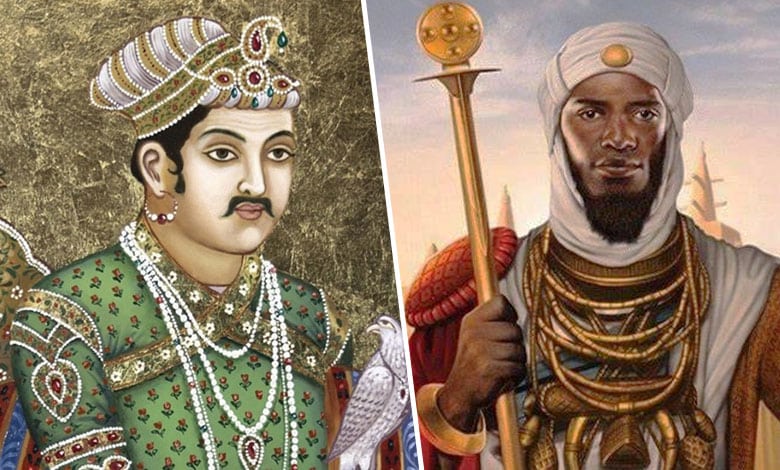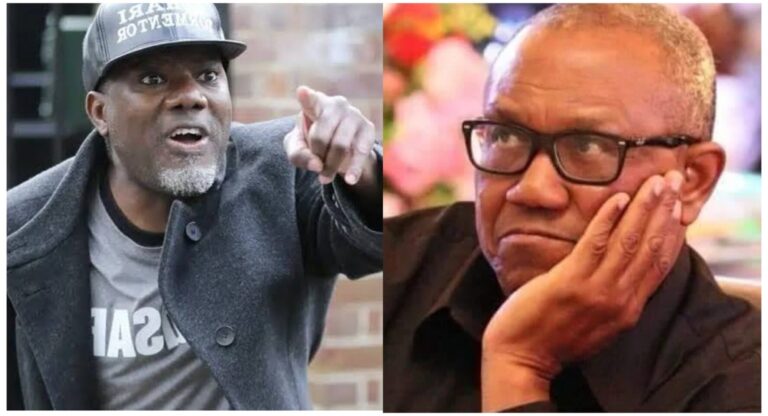
Meet the Richest Man Who Ever Lived This Is Not Elon Musk
Some people are unfathomably rich. According to Forbes, as of March 2024, Bernard Arnault is the wealthiest man alive, with $233 billion to his name.
READ ALSO: Trag!c! Insurance company’s director ends it all during lunch break
That’s more than the combined gross domestic product of Myanmar, Laos, and Cambodia, which have around 78 million people between them.
In today’s world, where tech empires grow rapidly and consolidate vast fortunes, it’s tempting to think that today’s billionaires are the wealthiest humans ever to walk the Earth. But, as it turns out, the wealthiest people lived centuries ago, and their fortunes were so vast that they reshaped entire economies.
READ ALSO: SAD! Popular TikToker d!es as she gets knocks down by a car while running after thieves
From Modern Billionaires to Historical Titans
Estimating wealth in bygone eras is difficult because what it means to be wealthy varies widely from epoch to epoch. How do you value the landholdings of Persian emperors? Does multiplying the weight in ounces of Genghis Khan’s hoard by $2,628 (the most recent price of gold per ounce as of November 2024) tell you what his wealth was worth then?
In economies where there was no such thing as a true currency, taxes were levied in grain, and literacy might as well have been rocket science; slapping dollar amounts on things is an exercise in wild speculation.
But that doesn’t make it any less fun. Take Marcus Licinius Crassus, who had an estimated net worth of 170 million sesterces. The original value investor bought whole swaths of Rome when they were on fire and only sent his army of enslaved builders and architects to put out the flames if the owners paid up. When Spartacus led a rebellion in 73 B.C., Crassus personally fielded two legions.
READ ALSO: VIDEO: Beautiful lady goes viral for tattooing boyfriend’s name on her chest
Legend has it that he died when molten gold was poured into his mouth, symbolizing his thirst for riches.
However, we don’t have to go back to antiquity to find people with truly unsettling wealth. Depending on the estimate, John D. Rockefeller had anywhere from $300 billion to $400 billion.
J.P. Morgan was the U.S. lender of last resort before the Federal Reserve was established, stabilizing the economy through a massive loan to the government following the Panic of 1893.
But rather than measuring wealth in absolute terms, it’s best to look at who, in their own time and place, was so rich that they defined the value of money. In all of history, there are two people who controlled so much wealth relative to everyone else that spending it (voluntarily or not) could send the economy of the known world into a tailspin.
Mansa Musa
In 1324, Mansa (meaning Emperor) Musa embarked on a hajj (pilgrimage) to Mecca, bringing with him an entourage of 60,000 people and an enormous treasure of gold. His journey through the Mediterranean world caused ripples throughout the region. Musa distributed vast amounts of gold in Cairo, Medina, and other cities. His generosity—especially the gold he gave away—was so extreme that it caused hyperinflation in these cities.
Historically, Musa’s wealth is difficult to quantify, but it’s estimated that he was so rich that his spending caused prices to soar for everyday goods. Realizing his influence on the local economy, Mansa Musa took matters into his own hands. To counteract the damage his spending caused, he embarked on a quantitative easing program, buying up gold from the markets of Cairo, effectively restoring some order to the economy.
All That’s Interesting. “Mansa Musa Of Mali May Have Been The Richest Person In History.”
He was a one-person macroeconomic cycle.
Atahualpa
While Mansa Musa’s wealth shook the Mediterranean, Atahualpa, the last ruler of the Incan Empire, controlled an equally remarkable fortune, although under different circumstances.
The Inca Empire was unique because it didn’t use a formal monetary system—instead, wealth was measured by control over resources and labor.
The entire state was organized as a family unit, with the Inca (the Emperor) controlling everything: food, clothing, luxury goods, houses, and people. As a man, you served the Emperor as a farmer, laborer, craftsman, or soldier. In exchange, you were provided with everything you needed to survive.
In 1532, following a brutal civil war between Atahualpa and his half-brother Huáscar, Atahualpa was captured by Spanish conquistadors. In a desperate attempt to save his life, he offered a ransom of gold and silver.
Legend has it that he filled an entire room with gold, an amount estimated at roughly $1.5 billion in today’s terms.
The Spanish killed him anyway and gutted his empire, but the billions of dollars worth of gold and silver that flooded Europe after 1500 caused high inflation and a prolonged economic slump.
Much of the vast sums of gold that sank Europe’s economy in the 16th century came from Atahualp
Why Is It Difficult to Compare Historical Wealth to Modern Wealth?
Wealth in ancient times was measured differently, and without standardized currency systems, it’s hard to accurately translate historical fortunes into modern-day figures. The value of land, resources, and power often overshadowed monetary wealth.
Who Was the Richest Person in Terms of Absolute Wealth?
It’s difficult to measure wealth absolutely, but Mansa Musa is often considered one of the richest figures in history. His wealth was so vast that it caused economic shifts in multiple regions.







